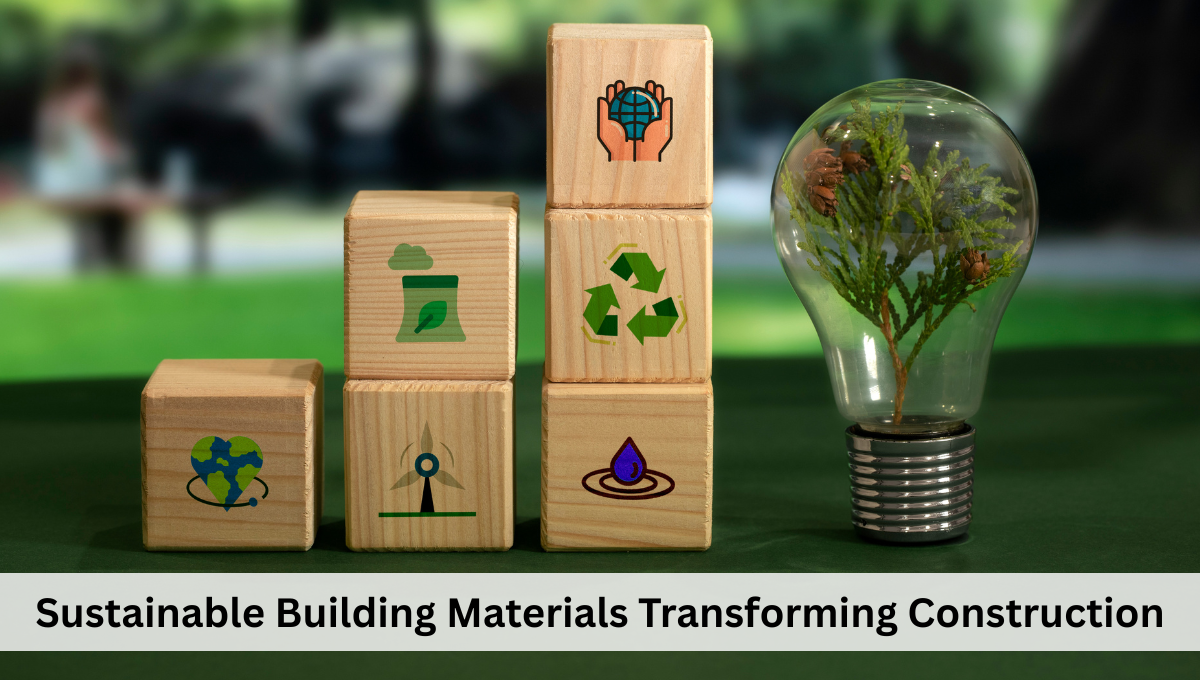Sustainable construction is more than a trend—it’s a necessity. With global climate goals in focus, the building industry is turning to innovative materials that minimize environmental impact, boost energy efficiency, and promote long-term resilience. Here are 10 cutting-edge sustainable materials that are revolutionizing the future of construction.
1. Cross-Laminated Timber (CLT)
How it works: CLT is made by gluing layers of timber at perpendicular angles, creating a strong, lightweight, and versatile panel.
Application:
- Use in mid-rise to high-rise buildings as a replacement for concrete and steel.
- Prefabricated panels reduce on-site waste and labor time.
- Ideal for seismic zones due to its flexibility and strength.
2. Recycled Steel
How it works: Steel that is melted down from scrap and reused in construction applications, offering strength without the carbon-intensive production of new steel.
Application:
- Use in framing, beams, and roofing.
- Supports LEED certification by reducing embodied energy.
- Recyclable again at the end of the building’s life cycle.
3. Hempcrete
How it works: A bio-composite material made from the inner woody core of hemp plants mixed with lime.
Application:
- Use for insulation, walls, and floor slabs.
- Naturally mold-resistant, breathable, and carbon-negative.
- Best suited for non-load-bearing structures or combined with a structural frame.
4. Ferrock
How it works: A carbon-negative alternative to concrete made from waste steel dust and silica.
Application:
- Ideal for pavements, foundations, and marine structures.
- Absorbs CO₂ during hardening, making it extremely eco-friendly.
- Performs better than concrete under compression.
5. Bamboo
How it works: Fast-growing, renewable plant used in construction due to its strength-to-weight ratio.
Application:
- Ideal for scaffolding, flooring, partitioning, and even structural frameworks.
- Can be treated to increase durability and pest resistance.
- Supports traditional and modern architectural styles.
6. Mycelium
How it works: Fungal roots grown into specific molds to form lightweight, biodegradable bricks.
Application:
- Use for insulation, interior panels, and biodegradable packaging.
- Grown rather than manufactured—reduces emissions and waste.
- Flame-retardant and resistant to water and mold.
7. Rammed Earth
How it works: A technique using compacted natural materials like earth, chalk, lime, or gravel.
Application:
- Ideal for exterior and interior walls.
- Requires minimal cement, reducing carbon footprint.
- Excellent thermal mass for temperature regulation.
8. Transparent Wood
How it works: Natural wood processed to remove lignin, replaced with transparent polymer.
Application:
- Ideal for windows and solar panels, combining strength and light diffusion.
- Retains biodegradability while offering insulation benefits.
- More durable than glass and less energy-intensive to produce.
9. Straw Bale Construction
How it works: Tightly packed straw bales used as structural elements or insulation.
Application:
- Use in walls, providing high insulation values (R-values).
- Affordable and renewable, especially in rural and off-grid projects.
- Fire-resistant due to the density of packed bales.
10. Recycled Plastic Bricks
How it works: Bricks made from melted or compressed plastic waste, sometimes mixed with sand.
Application:
- Strong, lightweight, and moisture-resistant.
- Suitable for non-load-bearing walls and pathways.
- Diverts waste from landfills and oceans.
Conclusion
As environmental responsibility becomes central to architecture, these innovative materials offer practical, scalable, and sustainable solutions. By integrating them into construction practices, developers can significantly reduce the carbon footprint and build resilient, future-proof structures. Know about more products like these here!


